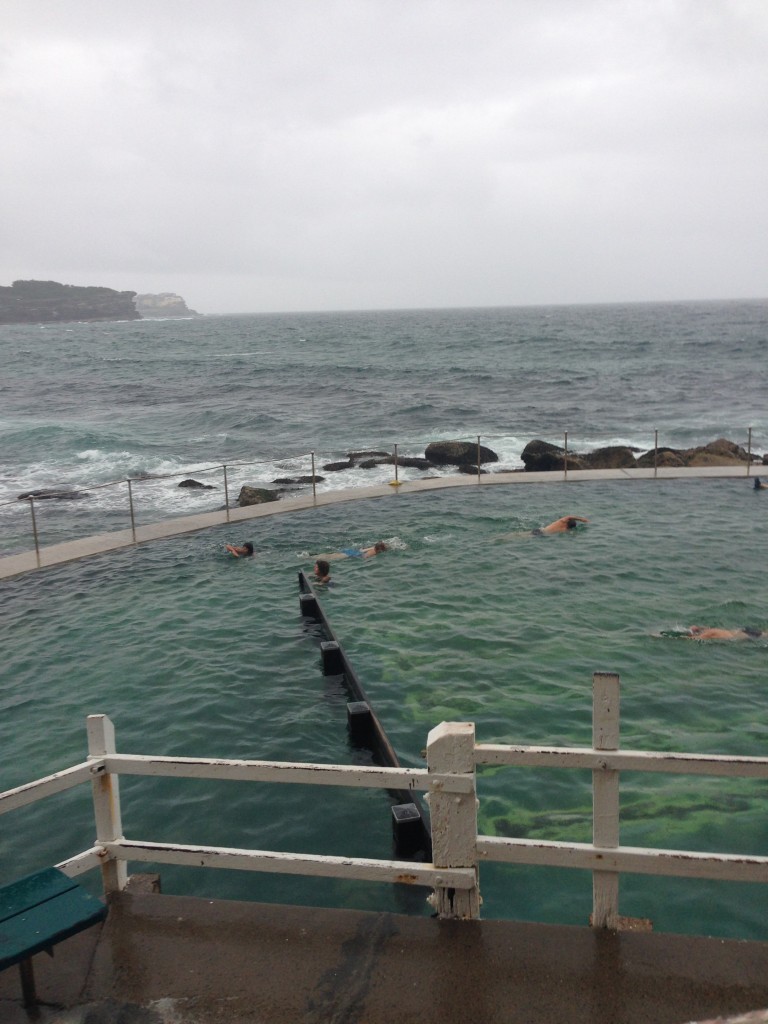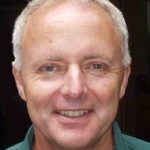Thinking about last year
I’ve put on idleness like a pair of comfortable summer shorts.
Books everywhere on the floor around my bed and on my bedside tables like a still life mice plague, ungovernable. Their numbers and mess say it’s January, when I reflect, read, plan. What was last year about, what did I do badly or well, what would I like to do this year? I pretend to find answers.
And there are movies, walks, morning swims in the ocean.
Watching wartime England reject then embrace then reject again the genius of Alan Turing in the film, The imitation game, I saw how shame can outdo intellect, generosity, achievement and honour. It’s said Turing cut short WWII by two years and saved millions of lives. (See it; Cummerbatch acts so finely.) After the war Turing was convicted of a crime relating to homosexuality and chose the court’s offer of a two year course of hormone treatment by which he would castrate himself in preference to a jail sentence but killed himself after the first year; during this period the state left him to swing in the wind of prejudice, unprotected, unthanked, friendless.
The story of Turing, how his country betrayed him, and the role of shame in private and public man, brought me to the poet who has so much to say to me about love, loss, shame, hope and beauty – Rilke – and to this:
“I love the dark hours of my life
which deepen my senses;
in them, as in old letters, I find
my daily life already lived
and, like legends, distantly beyond.
From these hours comes the awareness that I
have room for a second life, timeless and wide.
And sometimes I’m like the tree, ripe and
murmuring, which fulfils that dream
above a grave, the one a boy in the past
- so that he could press it into his warm roots -
lost in sorrows and songs.”
I love the image of the boy of the past in the ‘grave’ who nourishes the grown man, especially the words, “ripe and murmuring”: they speak of hope, motivation and energy and encourage me to linger in last year’s moments.
Lily, the family dog, a King Charles Cavalier, who brought spontaneity and smiles to us all, who we loved, died this year. I can’t walk through Sydney uni’s lawns in front of the grand building without remembering Lily running full tilt boogy in circles in early winter mornings, the frost water flying in a wide arc from her suspended ears like a garden hose dancing; gods, there was joy in a mutt on the move, right there. A native mint has been planted above her grave. She barks and smiles and runs, still.
A borrowed book, Maestro John Monash – Australia’s greatest citizen general, by the former Australian politician, Tim Fischer, describes the genius and triumphs of Sir John Monash despite prejudice and institutional calumny. From it I learnt how Sir Keith Murdoch, the publisher, and CE Bean, the historian, conspired to badmouth and to have Monash sacked, sidelined and unrecognised because he was a Jew.
By his high level of planning, imagination, robust review of previous strategies and intense level of integration of all things needed to make war Monash cut short WWI by at least a year. A highly successful engineer in civil life Monash applied analytical discipline to the planning and execution of the Battle of Hamel. He planned it to last 93 minutes and it went for 94. It became the template for the rest of the war and its success was repeated leading to the war’s end.
The English King George V gave more recognition to Monash than did Australians, and travelled to the French battlefield to knight Monash. The King’s respect, recognition and friendship with Monash made Australia’s then Prime Minister, Billy Hughes, jealous, who then did his best to keep Monash unrecognised and in England away from Australia after the war so he, Hughes, could campaign for re-election without the public being distracted by Monash’s widely recognised war achievements.
The least approachable of January’s books, technical, with no obvious heart or warmth, is a book that’s finely crafted, rich with extraordinary amounts of research and professional experience and which nonetheless ends up with a backbone of humanity; Affect regulation and the repair of the self by Allan N Schore. I read it to explore and get another angle on Turing’s experience, and mine, to seek to understand how we humans react to the emotion of shame.
“The essential psychological lesion in these individuals . . to shame and to a failure to self regulate emotional experience . . . is that they do not have the capacity to tolerate or to recover from narcissistic injuries that expose negative affect, especially hypoaroused affects like narcissistic rage and hypoaroused shame, while maintaining constructive engagement with others. The coping ability to affectively reconnect with an emotionally significant other after a shame-stress separation, and indeed to use the other to recover after shame associated narcissistic injury and object loss has never effectively developed in this personality structure due to its early practising experiences . . . Shame-prone narcissistic personalities are known to suffer from narcissistic injury-triggered, overwhelming, internal self-shaming tendencies and repetitive oscillations of self-esteem, which necessitate ‘endless attempts at repair’ . . . ‘the task of the narcissistic repair mechanism is to be rid of shame’ . . . Without a system to actively cope with and thereby tolerate this potent affect, the immature, undeveloped, archaic superego avoids risk experiences that are potential points of shameful self-exposure, thereby diminishing the expansion and the province of the ego ideal.” (3)
Which brought me to reflect on today’s Australian political life, politicians and Australia’s civic ego. I toyed with re-reading Richard Sennet’s, The fall of public man, which explores this, but the weather, walks and beach had put me in too good a mood to linger on societal disappointments, so it remains on the bookshelf, unplaguing me or my floor.
Fortunately, I’d discovered Men explain things to me and its author, Rebecca Solnit. Solnit’s shaken me up about thought itself, writing, reading and walking, and her books make up two of the still-life mice on the floor. I’ll read the rest of her works this year.
In Wanderlust Solnit explores the history, motives, ways we walk. There’s a running footer (how appropriate is that?) through the book with quotes from dozens of writers who have described walking and it’s hard to choose between them and the text itself there’s so much to catch the imagination. In it she mentions an essay by Virginia Woolf about walking and it’s a treat:
“No one perhaps has ever felt passionately towards a lead pencil.
But there are circumstances in which it can become supremely desirable to possess one; moments when we are set upon having an object, an excuse for walking half across London between tea and
dinner. As the foxhunter hunts in order to preserve the breed of foxes,
and the golfer plays in order that open spaces may be preserved from the
builders, so when the desire comes upon us to go street rambling the
pencil does for a pretext, and getting up we say: “Really I must buy a
pencil,” as if under cover of this excuse we could indulge safely in the
greatest pleasure of town life in winter — rambling the streets of London.
The hour should be the evening and the season winter, for in winter
the champagne brightness of the air and the sociability of the streets are
grateful. We are not then taunted as in the summer by the longing for
shade and solitude and sweet airs from the hayfields. The evening hour,
too, gives us the irresponsibility which darkness and lamplight bestow.
We are no longer quite ourselves. As we step out of the house on a fine
evening between four and six, we shed the self our friends know us by and become part of that vast republican army of anonymous trampers, whose society is so agreeable after the solitude of one’s own room.”
Woolf’s description of the chaos she sees and loves in the second hand bookshop on her walk suggests something of the January chaos in my room:
“Second-hand books are wild books, homeless books;
they have come together in vast flocks of variegated feather, and have a
charm which the domesticated volumes of the library lack. Besides, in
this random miscellaneous company we may rub against some complete
stranger who will, with luck, turn into the best friend we have in the
world.”.
An old favourite, contained in The Penguin Book of the Ocean, washed up one of my favourite essays, The gray beginnings, by Rachel Carson. If you want an example of how to write about science this would be as good a place to start as any:
“When they went ashore the animals that took up a land life carried with them a part of the sea in their bodies, a heritage which they passed on to their children and which even today links each land animal with its origin in the ancient sea. Fish, amphibian and reptile, warm-blooded bird and mammal – each of us carries in our veins a salty stream in which the elements sodium, potassium and calcium are combined in almost the same proportions as sea water. . . . In the same way, our lime-hardened skeletons are a heritage from the calcium-rich ocean of Cambrian time. Even the protoplasm that streams within each cell of our bodies has the chemical structure impressed upon all living matter when the first simple creatures were brought forth in the ancient sea . . . ”.
Strangely, the news that Australia’s birds were the authors of birdsong and also the most aggressive in the world cheered me up; that seemed like a moment of backbone in the midst of Australia’s jellied body politic. It’s described in Where song began, by Tim Low:
“The feature of Australia that is most revealing, I am convinced, is all the aggression between [bird] species . . . what impresses me is how often I see it in the vicinity of eucalypts, banksias, and their relatives . . . during six weeks . . . in Europe and North America, the only sustained bird aggression I saw was around a eucalypt planted in parkland near Los Angeles. Hummingbirds were defending its flowers, and a hooded oriole its lerp, although they were only attacking their own kind . . . ”.
Whatever.
Of all this it’s walking and swimming which speaks most to all of me – body, heart and mind – and that’s when my mind is blessedly emptiest, the thing I am may hear, see and feel best.


